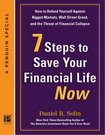
In his "Wealth Matters" column in The New York Times, Paul Sullivan discusses the investing problems confronting doctors and lawyers. According to advisers interviewed by Sullivan, these professionals mistakenly believe investing is "pure science." Not true, say the advisers: "It's an art form." In a follow-up article, the Bucks editors of the Times debate the issue of "Investing as an Art Form, Not a Science."
How sad for investors. Imagine trusting your life savings to an investment professional who can't articulate a scientific basis for her recommendations. Are you really supposed to rely on some ill-defined "art" and hope for the best? If so, does this "art" differ from adviser to adviser? How can you possibly evaluate the "art" used by your adviser?
Fortunately, you don't have to go there. The premise is flawed. Investing is science. It is based on the science of capital markets.
The science of investing is set forth in this white paper prepared by Dimensional Funds Advisors [Full disclosure: I am a wealth adviser with Buckingham Asset Management and recommend DFA funds to my clients]. The basic premise of the science of investing is that capital markets work. The goal of the investor should be to capture the returns of those markets, and increase them through portfolio design. Advisers who understand the science of investing know that returns are the product of risk. Some risks are worth taking, while others are not.
We know that stocks have a higher expected returns than bonds. We also know that portfolios tilted towards small and value stocks are likely to outperform over the long term because the market discounts the prices of those stocks to reflect their higher risk. The risk of bonds is a product of the length of the maturity of the bonds and the underlying credit risk.
With these factors in mind, it is relatively easy to structure a portfolio consistent with your investment goals. Do you seek higher expected returns? Then you should increase your exposure to stocks. Alternatively you could leave your allocation to stocks unchanged, but tilt that allocation to hold more small and value stocks.
A critical component of the science of investing is avoiding risks that don't generate expected return. These risks include lack of diversification, trying to guess which countries, stocks or fund managers will "beat the markets" (or relying on those who claim to have this expertise), or investing based on ratings provided by third-party vendors.
Advisers who believe they have special insights into the market (which they define as "art") are engaging in speculation and not investing. Their "art" includes stock picking, market timing and fund manager selection. They call it an "art," because there is no peer-reviewed data indicating it is any more reliable than a monkey throwing a dart at a board and hoping for the best.
If you are using a broker or adviser who believes investing is an "art," you need to familiarize yourself with the science of investing. It is supported by hundreds of academic articles and is consistent with the views of Nobel Prize winners in economics.
Keep in mind this sage advice from Charles Ellis, in his classic book, Winning the Loser's Game: "There are three kinds of investment risk. Two can be virtually eliminated. The third, market risk, must be managed."
That's science. Not art.

